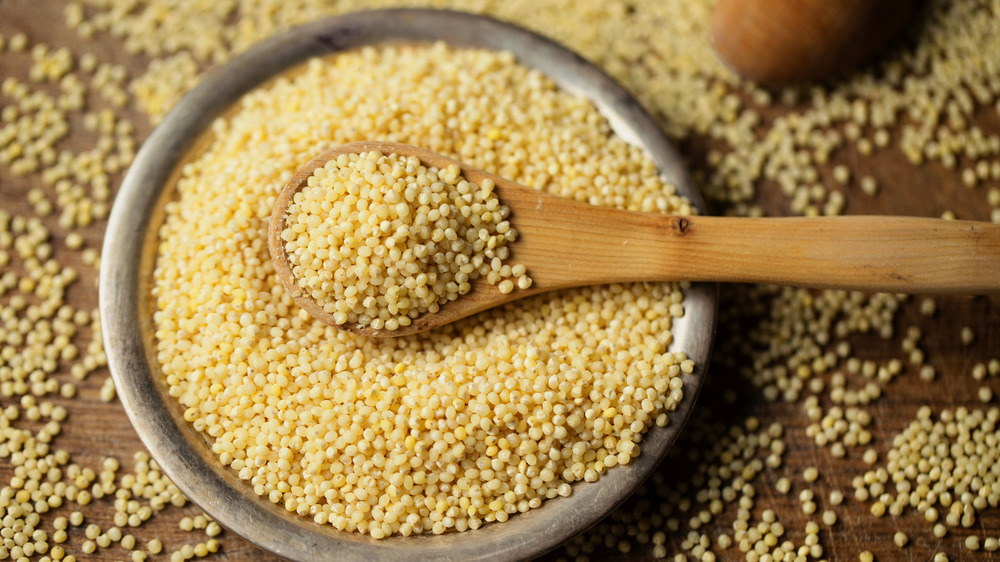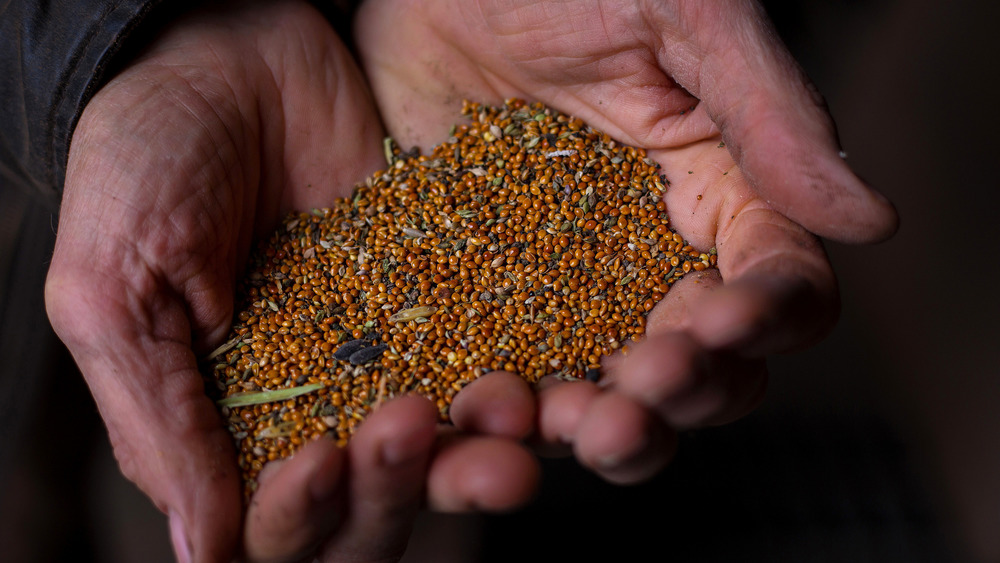The Common Cooking Mistake That Will Ruin Your Millet
In the earliest days of cooking, millet graced our dinner tables. According to PNAS, this ancient grain traveled the world via China and thrived thanks to its ability to withstand drought. Thousands of years later, we continue to enjoy this ancient grain that packs plenty of nutritional value. According to Healthline, millet has protein, antioxidants, vitamins, and minerals that help balance out our overall diet. With a unique nutty flavor, this grain stands apart from all other foodstuffs.
While we can easily get behind the tastes and textures of millet, cooking it can change anyone's tune. Thanks to the help of Palak Patel, chef at the Institute of Culinary Education, we can avoid the biggest problem we face when we tackle cooking this ancient grain.
Knowing more about the plant can help us determine the best way to prepare it. "Millet is a seed that's gluten-free," Patel says. "Small-seeded grasses are harvested and produce small golden yellow seeds. Also an ancient grain with a pleasantly mild and slightly sweet flavor. When cooked properly it resembles couscous. Millet is a very small seed and cooks fast. It is a great grain for replacing grits." Patel also adds that millet is ideal for recipes that involve some kind of porridge that's mixed with other flavorful ingredients to help balance out the bland taste.
Making the perfect pot of millet
When you make millet, one of the biggest mistakes that can be made is over- or under-estimating how much water you need. "Using too much water turns the millet to mush," Patel says. "Also beware of soaking the grains too long and not adjusting the water ratio."
How will you know if your water measuring skills were a bit off? It'll come through in the texture. Patel says that millet will turn "soupy" when there's an excess of water and will get "dry and clumpy" if you use too little. What you should be looking for is a "fluffy, airy texture that resembles couscous," she explains.
For the optimal water amount, aim to use two cups of water for every cup of millet. After bringing this amount of water and some salt to a boil, add your millet and bring it back to a boil. Patel says to then lower the heat and allow it to simmer for 20 minutes. Once it's tender, "drain any additional water and spread onto a cookie sheet to cool."
Once you have your perfectly cooked millet, you can pair it up with your favorite meals. "Millet can be served for breakfast with a poached egg or as a side dish resembling grits," Patel says, adding that it's also a perfect grain to try out in your slow cooker. "The longer cooking times works well creating a creamy, rich texture."
No matter how you enjoy your millet, you can guarantee an excellent final product that anyone can love by making sure you get your water measurements just right.

